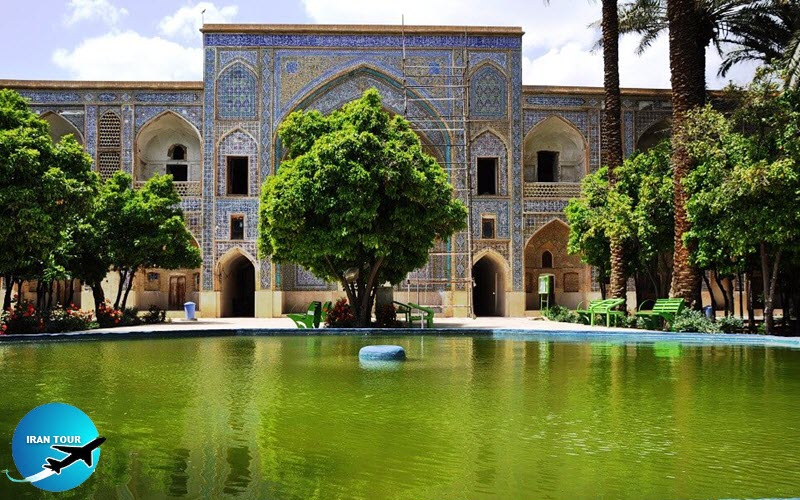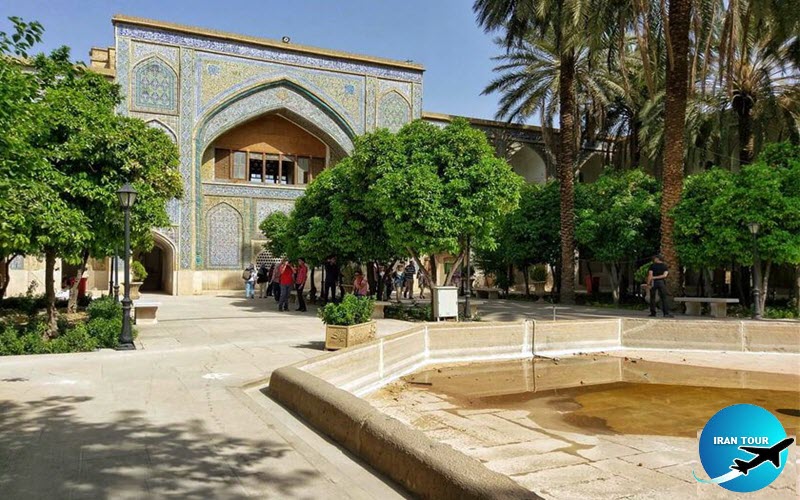Copyright 2020 - 2021 irantour.tours all right reserved
Designed by Behsazanhost
Khan Madreseh
Khan Madreseh
The largest and most famous college for religious instruction in Shiraz, the Khan Madreseh was founded at the order of Allahverdi Khan, the famous Governor-general of Fars, and completed in 1615 by his son and successor, Imam Qoli Khan. At the time of its inauguration, the college housed one hundred dorms, inhabited by one hundred students of theology. Some have noticed an interesting symbolism in the use of numbers in the Khan Madrasah. Thus, a number of 100 corresponds to the numerical meaning of the name of the Prophet Mohammad. The madrasah has five lecture rooms, commemorating the Shiite's dearest saints - the Prophet Mohammad, his daughter Fatima, Imam Ali, Imam Hasan, and Imam Hossein. The total number of principal sections in the college is 110 (the numerical meaning of the name of Imam Ali), which together with service areas constitutes 114 (the number of chapters of the Koran).
 |
The Khan Madreseh was established to provide an appropriate setting for the lectures of Mulla Sadra, the prominent Iranian philosopher, who at that time lived in seclusion in Kahak, a village in North Khorasan. The scholar readily accepted the invitation and soon turned the college into one of the most progressive educational establishments of its epoch, teaching both religious and secular sciences.
The seminary has a total area of 3,926 sq. m. In the past, it was surrounded by a park where students could spend their leisure time. Sad to say, all of it has been encroached upon by residential quarters. The madrasah is entered via an impressive portal O, decorated with tiled muqarnas The entrance leads to an anteroom featuring beautiful mosaics of blue and black colors. The interior is designed in the traditional style with a well-tended central court 3 surrounded by two-story arcades, marking off the students' lodgings. The upper fridge of the chambers is highlighted by pretty tile patterns and calligraphic inscriptions. Measuring 51 by 45 m, the courtyard is shaded by old date palms and cypress trees and cooled by a very graceful octagonal stone pool. On four sides, the arcades are interrupted by the Eivans 16 m high, reserved for classes or praying. The most beautiful is the south Eivan, adorned with majestic enameled faience. It is rivaled only by the west Eivan, lavishly embellished with lovely tile work and masterful calligraphy. The west Eivan forms part of the entrance area. It also houses the famous classroom where Mulla Sadra used to teach.
The madrasah used to have two minarets, each provided with a double staircase, a unique feature in Iran. Sadly, both were ruined during Karim Khan's war the Qajar claimants to the throne. The college was repeatedly damaged by natural and social calamities, but each time it was meticulously restored. The most important repairs took place at the order of Naser al-Din Shah in the 19th century. In recent years, necessary repairs were also carried out with great care and consideration.
 |
Mullah Sadra
Mullah Sadra Also known as Sadr al-Din Shirazi, Mullah Sadra was born in Shiraz into a noble and powerful family around 1572. After having completed his early education in his hometown, Mullah Sadra went to Esfahan, then the leading cultural and intellectual center of Iran. There he studied under the intellectual patronage of such remarkable Iranian scholars as Sheikh Bahai and Mir Damad. Opposed by the orthodox Shiite theologians who considered most of his views heretical, Mullah Sadra was forced to seek physical and spiritual retreat in the village of Kahak near Qom, where he spent fifteen years. Toward the end of his life, Mullah Sadra returned to Shiraz to lecture in the Khan Madrasah. He died in Basra in 1640 during his seventh pilgrimage to Mecca on foot. Mullah Sadra is commonly regarded as the most eminent philosopher of the Safavid era in Iran. He produced a bulk of works, the most famous of which was Asfar (“Journeys”). In this magnum opus, he stated the principles of what he called “transcendent wisdom” and in which he approached every single problem of traditional philosophy from this "meta philosophical" viewpoint. In many ways, Mulla Sadra's major corpus is the attempt to synthesize four major intellectual perspectives in Islam, which are the Illumination school established by Sohrevardi, Peripatetic school represented by Ibn Sina and Nasir al-Din Tusi, Gnostic school of Ibn Arabi, and Islamic theology. He also tried to reconcile the Koranic teachings, logical analysis, and intuitive knowledge, and this is where Mullah Sadra becomes particularly important in the history of Islamic thought.
- Details
- Category: Museums of Shiraz









